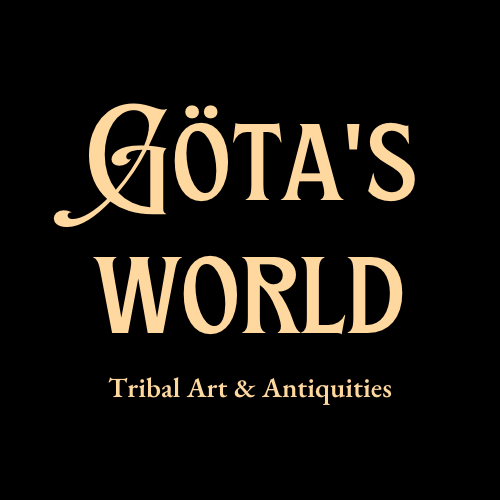Early Islamic Glass Alembic
Early Islamic Glass Alembic
Couldn't load pickup availability
Nishapur, c. 800 to 1100 AD, North-East Iran
This exceptional and exceedingly rare glass vessel, dated to c. 800–1100 AD from Nishapur, Iran, is a remarkable example of an alembic, also referred to as a funneled cup or cupping glass. Composed of translucent dark green glass, the vessel features a deep-hemispheric body with a rolled rim and an elongated stem handle. Its design, though understudied, exemplifies the ingenuity of Islamic artisans and scholars during a period of scientific and cultural flourishing. The term "alembic" derives from the Arabic al-anbiq (to still) and the Greek ambix (cup), emphasizing its potential role in distillation processes. Historical evidence and scholarly analysis suggest multiple functions for such vessels, including medical, chemical, and feeding applications.In medical contexts, alembics might have been used for cupping therapy, as described in Al-Tasrif, a seminal Arabic medical text by Abu al-Qasim al-Zahrawi (936–1030). Cupping vessels were employed to create suction on a patient’s skin, a therapeutic practice believed to alleviate various ailments.
Additionally, these vessels may have served to administer precise doses of medicine or food, especially to infants. In alchemical and chemical processes, alembics were integral to the distillation of liquids, such as perfumes, medicinal extracts, or alchemical preparations. The sophistication of Islamic chemistry between 900 and 1200 AD is well-documented, with numerous Arabic contributions influencing modern science. Terms like alkali, nitre, and alembic are lasting legacies of this golden age of discovery. Archaeological finds, including numerous examples from Nishapur, highlight the dual functional categorization of these objects: straight-spouted vessels as alembics for distillation and curved-spouted vessels as cupping glasses for medical treatment.
Production of these versatile tools ceased after the twelfth century, marking the end of an era in both Islamic glassmaking and the broader scientific practices they supported.This alembic, with its graceful form and historical significance, is not only a testament to the innovative spirit of early Islamic civilization but also a rare surviving artifact of its multifaceted contributions to science, medicine, and art.
Excellent condition. Intact. Age-related light wear and signs of use. Nipped solid pontil (or punt) mark on the bottom. Earth deposits on interior. Size approx. 5,3cm x 9,1cm x 4,9cm.
Provenance: According to information, from the collection of Sven Malmberg. Mr. Malmberg acquired and brought the objects to Sweden when he was second secretary at the Embassy of Sweden in Tehran 1979-1982
For a similar example see:
Physician's Cupping Glass or Alembic, Accession Number: 40.170.132
(https://www.metmuseum.org/art/collection/search/449825)
References and further reading:
Searching for the Original Use of a Mysterious Glass Vessel, Barbara Venezia, Metropolitan Museum of Art) August 24, 2016. (https://www.metmuseum.org/blogs/ruminations/2016/alembics)
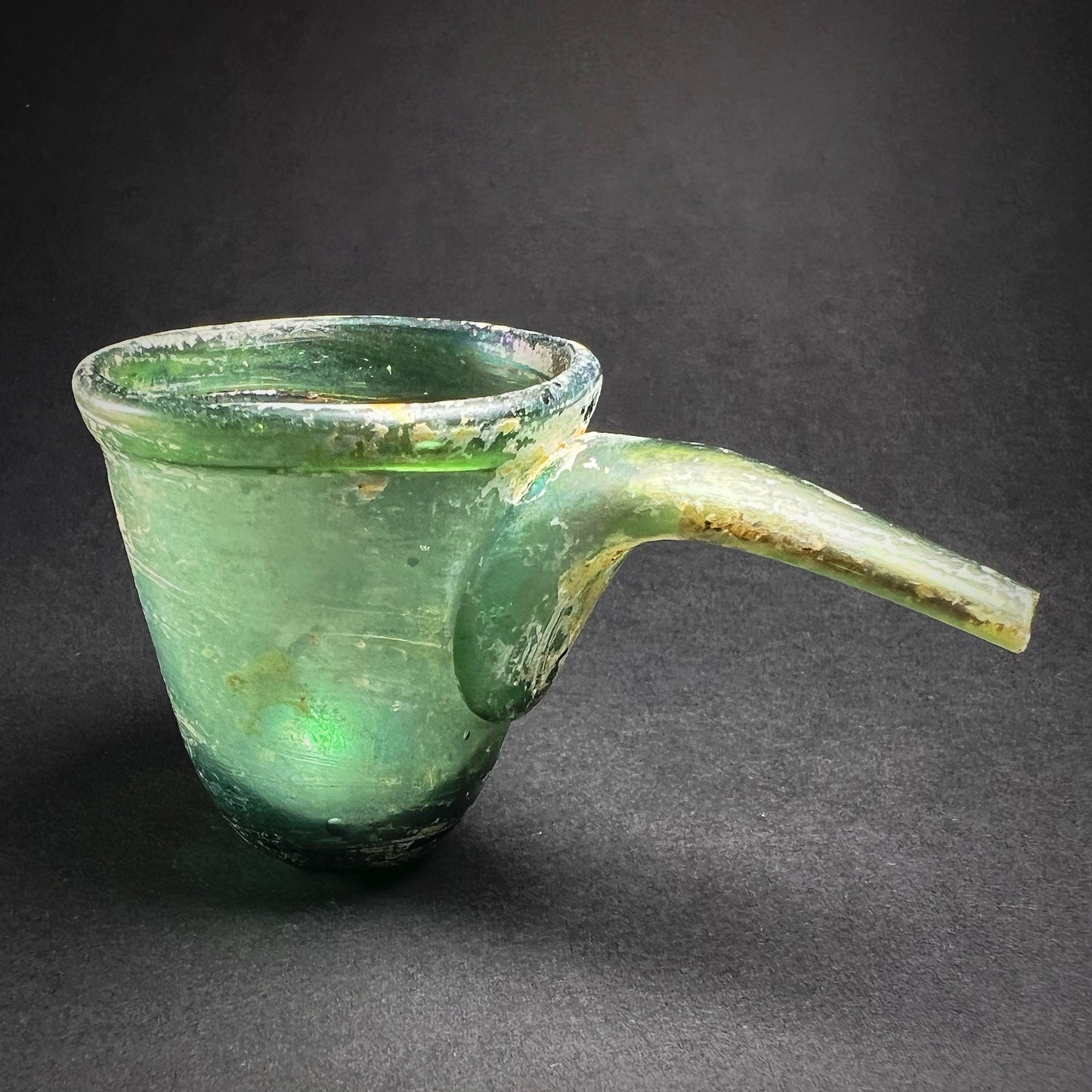
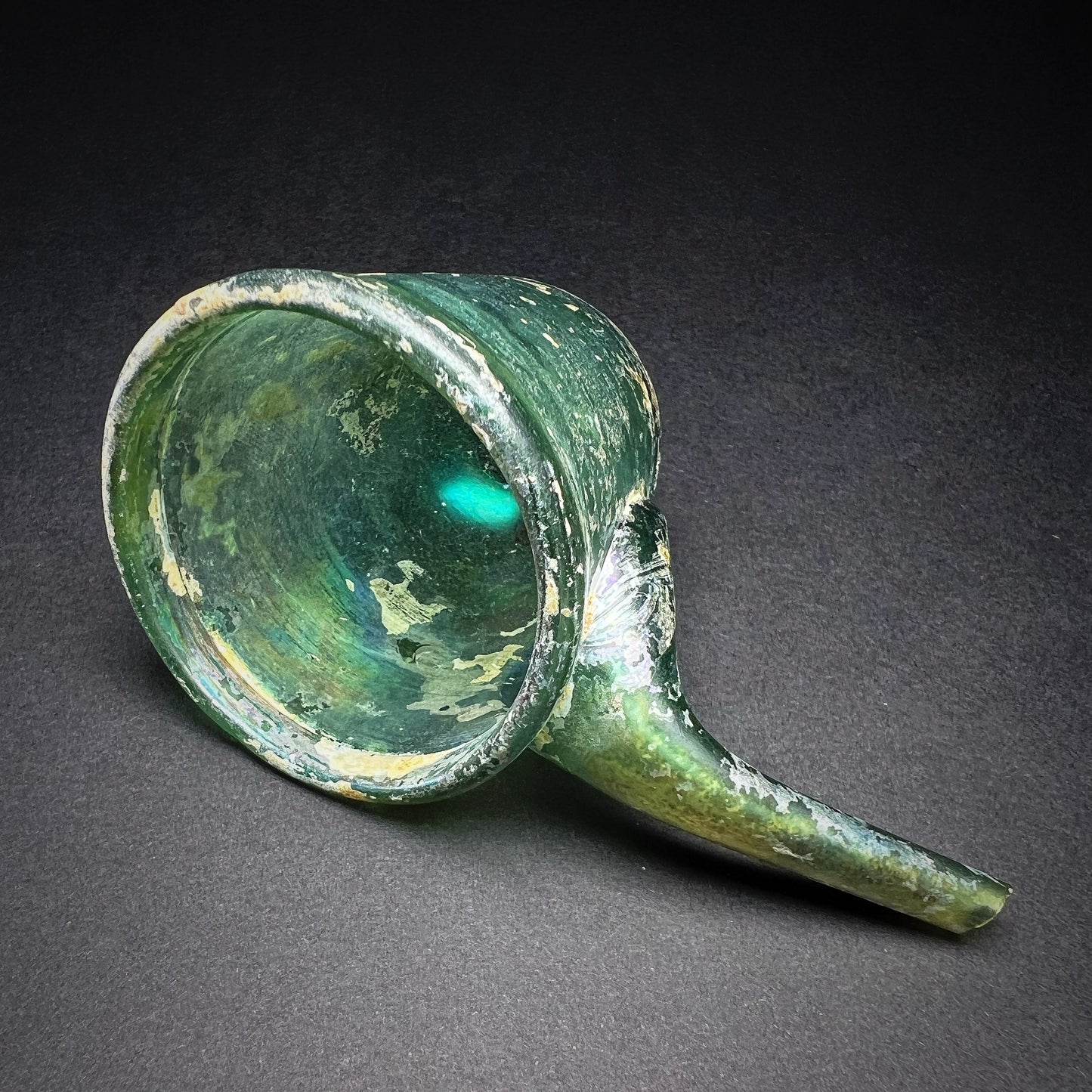
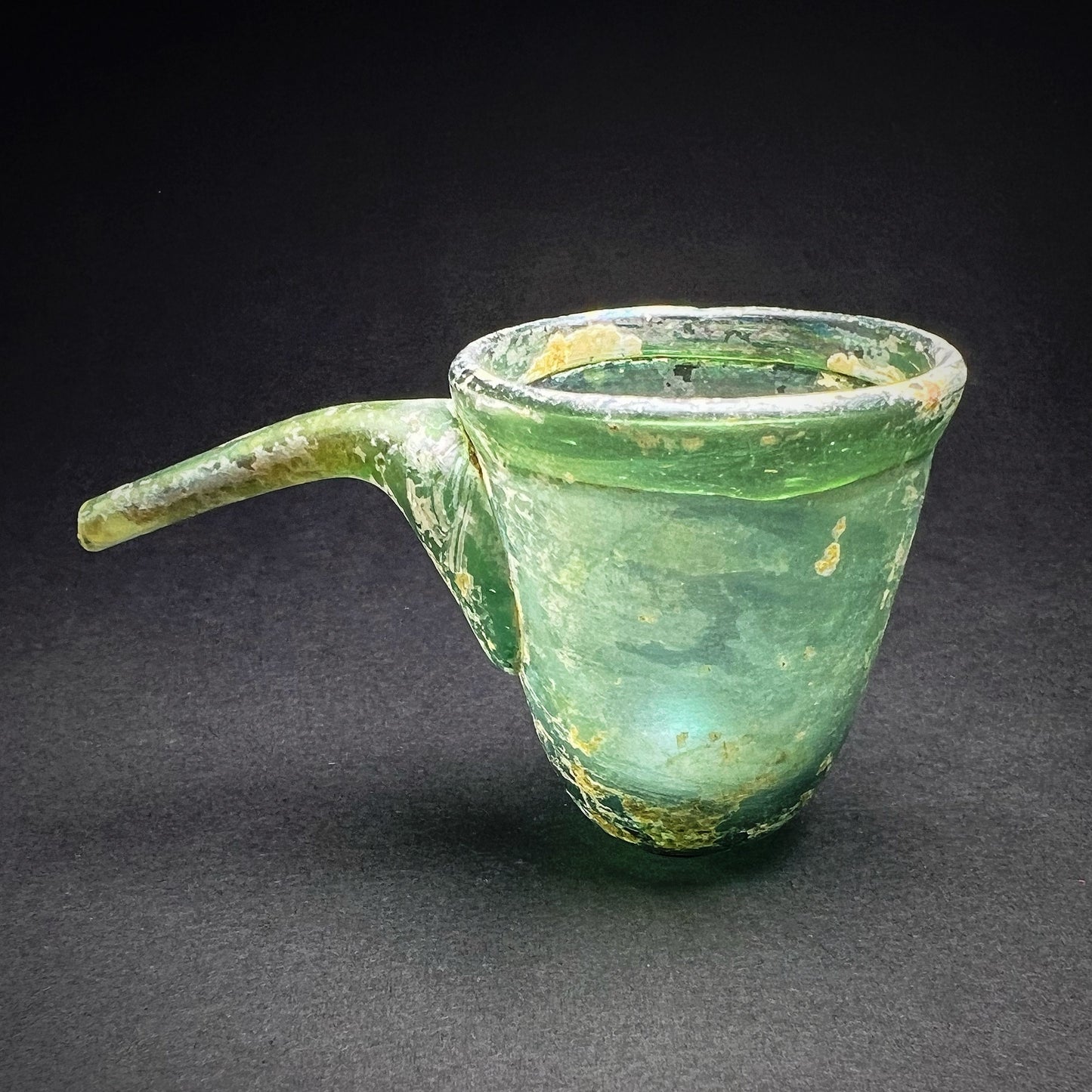
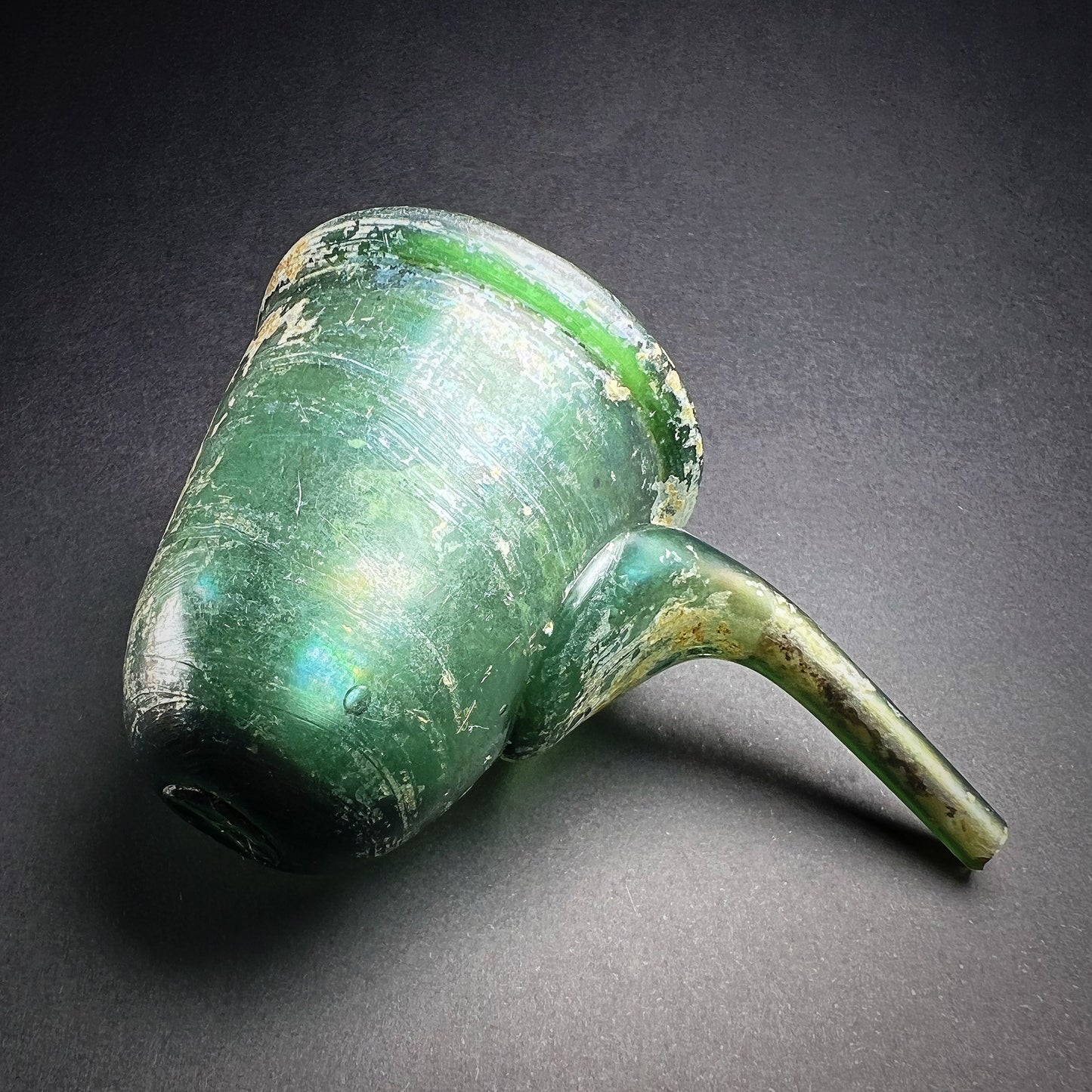
-
Shipping
The shipment will be prepared in the course of 3-5 days and dispatched via Posti Group Oyj or purchased item(s) can be picked up from our shop during the store's opening hours (Tarkk’ampujankatu 4, 00140, Helsinki, Finland). Within the Finland, all items are shipped via Posti Group Oyj unless otherwise requested. We pack the items carefully and mainly in recycled materials because we want to save nature. You will receive the tracking number for your items by e-mail.
-
Returns
Returns and exchange will be accepted within fourteen days (14) of receipt at the purchaser’s cost to include freight and packaging. Items must be returned in the same condition as when they were shipped, and will not be accepted if damaged or altered in any way. Please inform us via email (info@gotanmaailma.fi) or by calling +358408408352 before sending. We do not accept returns more than 14 days after delivery.
